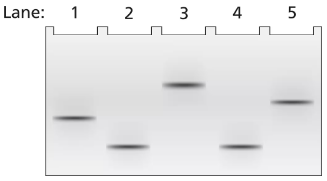How would you perform a genetic screen to identify genes directing Drosophila wing development? Once you have a collection of wing-development mutants, how would you analyze your mutagenesis to learn how many genes are represented and how many alleles of each gene? How would you discover whether the genes act in the same or different pathways, and if in the same pathway, how do you discover the order in which they act? How would you clone the genes?
Table of contents
- 1. Introduction to Genetics51m
- 2. Mendel's Laws of Inheritance3h 37m
- 3. Extensions to Mendelian Inheritance2h 41m
- 4. Genetic Mapping and Linkage2h 28m
- 5. Genetics of Bacteria and Viruses1h 21m
- 6. Chromosomal Variation1h 48m
- 7. DNA and Chromosome Structure56m
- 8. DNA Replication1h 10m
- 9. Mitosis and Meiosis1h 34m
- 10. Transcription1h 0m
- 11. Translation58m
- 12. Gene Regulation in Prokaryotes1h 19m
- 13. Gene Regulation in Eukaryotes44m
- 14. Genetic Control of Development44m
- 15. Genomes and Genomics1h 50m
- 16. Transposable Elements47m
- 17. Mutation, Repair, and Recombination1h 6m
- 18. Molecular Genetic Tools19m
- 19. Cancer Genetics29m
- 20. Quantitative Genetics1h 26m
- 21. Population Genetics50m
- 22. Evolutionary Genetics29m
15. Genomes and Genomics
Functional Genomics
Problem 18b
Textbook Question
A 3.5-kb segment of DNA containing the complete sequence of a mouse gene is available. The DNA segment contains the promoter sequence and extends beyond the polyadenylation site of the gene. The DNA is studied by band shift assay, and the following gel bands are observed.

Match these conditions to a specific lane of the gel.
3.5-kb fragment plus TFIIB, TFIID, TFIIF, and RNA polymerase II
 Verified step by step guidance
Verified step by step guidance1
Examine the gel image provided. Each lane represents a different experimental condition, and the bands indicate the presence of DNA-protein complexes or free DNA.
Understand the band shift assay principle: DNA bound to proteins migrates slower in the gel compared to free DNA, resulting in shifted bands. The more proteins bound, the slower the migration.
Identify the experimental condition described in the problem: the 3.5-kb DNA fragment is combined with TFIIB, TFIID, TFIIF, and RNA polymerase II. This combination should result in a significant shift due to the binding of multiple transcription factors and RNA polymerase II.
Compare the lanes in the gel image. Look for the lane with the most shifted band, indicating the presence of the largest DNA-protein complex. This lane corresponds to the condition described in the problem.
Match the condition to the specific lane number based on the observed band shift. The lane with the most shifted band represents the DNA fragment bound to TFIIB, TFIID, TFIIF, and RNA polymerase II.
 Verified video answer for a similar problem:
Verified video answer for a similar problem:This video solution was recommended by our tutors as helpful for the problem above
Video duration:
3mPlay a video:
Was this helpful?
Key Concepts
Here are the essential concepts you must grasp in order to answer the question correctly.
Transcription Factors
Transcription factors are proteins that bind to specific DNA sequences to regulate the transcription of genes. They play crucial roles in initiating and controlling the transcription process by recruiting RNA polymerase and other necessary proteins to the promoter region of a gene. In this context, TFIIB, TFIID, and TFIIF are specific transcription factors that assist RNA polymerase II in forming the transcription initiation complex.
Recommended video:
Guided course

Eukaryotic Transcription
Gel Electrophoresis
Gel electrophoresis is a laboratory technique used to separate DNA, RNA, or proteins based on their size and charge. In this method, samples are loaded into a gel matrix and subjected to an electric field, causing the molecules to migrate through the gel. Smaller fragments move faster and farther than larger ones, allowing for the visualization of different bands corresponding to various sizes of DNA or protein complexes, as seen in the provided gel image.
Recommended video:
Guided course

Proteomics
Polyadenylation Site
The polyadenylation site is a specific sequence in a gene where the addition of a poly(A) tail occurs during RNA processing. This tail is crucial for the stability, export, and translation of mRNA. In the context of the question, the DNA segment extends beyond this site, indicating that the entire gene, including regulatory elements, is being analyzed, which is important for understanding the transcriptional regulation of the gene.
Recommended video:
Guided course

mRNA Processing
Related Videos
Related Practice
Textbook Question
446
views


